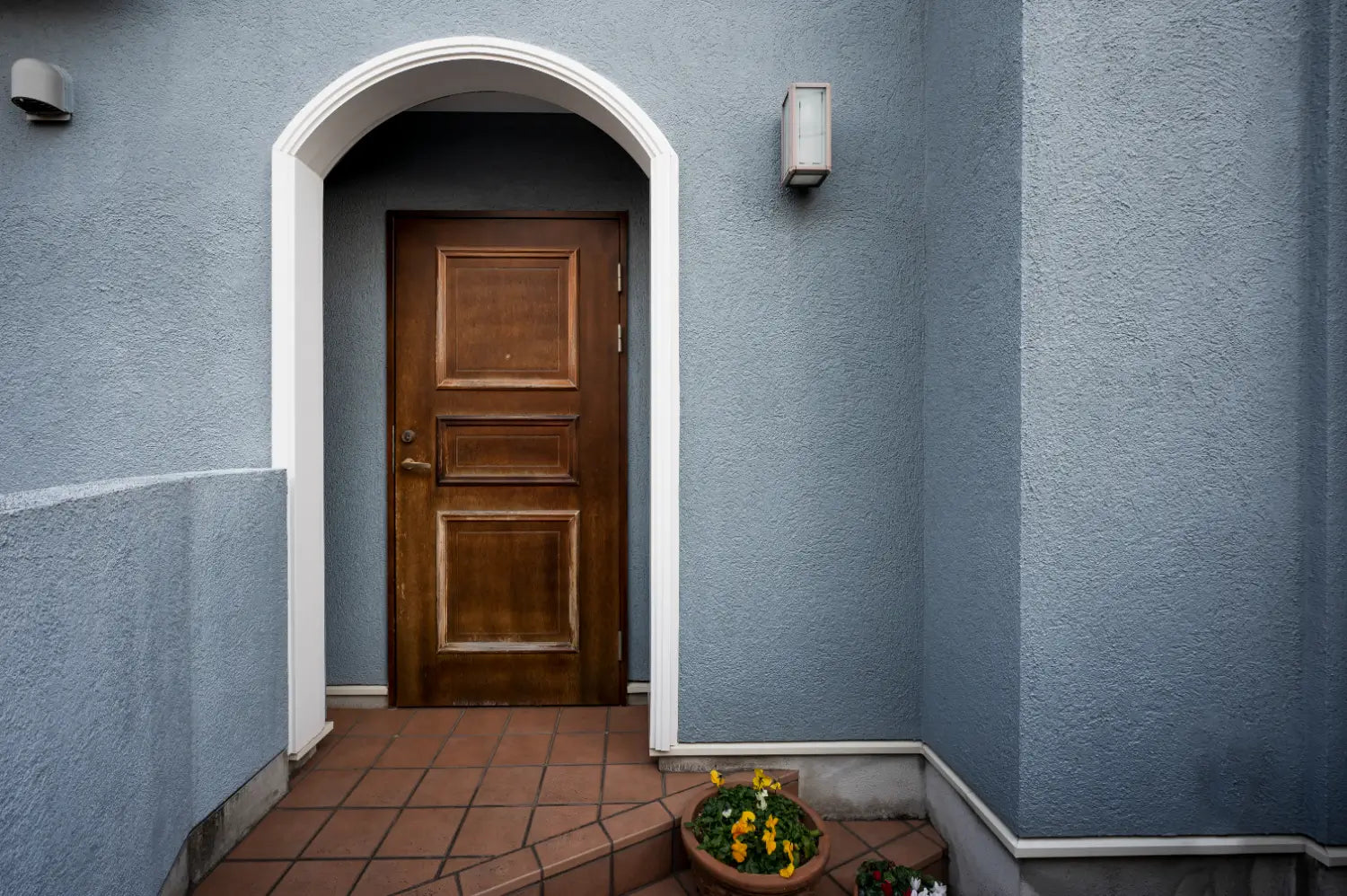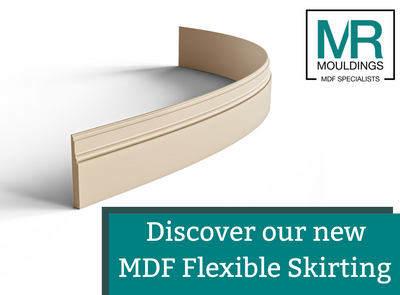
The Purpose of Architraves: Why They Matter in Interior Design
Architraves are an essential but often overlooked architectural feature in interior design. Found around doors, windows, and openings, they serve both a functional and decorative purpose. While their primary role is to conceal joints and gaps, they also add elegance, structure, and cohesion to a room.
Architraves serve both functional and decorative purposes in interior design. They conceal gaps, protect wall edges, and enhance structural stability around doors and windows. Aesthetically, they add architectural detail, complement skirting boards, and create a polished finish. Available in traditional and modern styles, they bring cohesion to interior spaces.
Whether you're renovating a period property or designing a contemporary space, understanding the purpose of architraves can help you make informed decisions about style, material, and installation. This guide explores their practical benefits, aesthetic value, and how to choose the right architrave for your home.
What Is an Architrave?
An architrave is a moulding that frames the edges of doors, windows, and openings, covering the joint between the wall and the frame. Traditionally made from solid wood, modern architraves are also available in MDF, PVC, and composite materials.
Architraves are often confused with skirting boards, but while skirting runs along the base of a wall, architraves surround openings, creating a defined transition between structural elements.
In classical architecture, architraves were a key feature in Greek and Roman design, forming part of elaborate decorative trims. Today, they remain a staple in both period and modern interiors.
Functional Benefits of Architraves
1. Concealing Gaps and Joints
Walls and door frames are rarely a perfect fit, often leaving unsightly gaps. Architraves provide a seamless cover, ensuring a clean and professional finish.
2. Protecting Wall Edges
High-traffic areas, especially around doors, are prone to scuffs, dents, and impact damage. Architraves act as a protective barrier, extending the longevity of plaster and paintwork.
3. Enhancing Structural Strength
By framing doorways and windows, architraves reinforce stability, preventing warping or movement in wooden frames over time. Well-installed architraves help maintain the structural integrity of door and window openings, reducing the risk of shifting or cracking.
4. Sealing Against Draughts
Well-fitted architraves help block air gaps, improving insulation and energy efficiency in a home. This is especially important in older properties, where draughts can contribute to heat loss and higher energy bills.
Decorative and Aesthetic Value of Architraves
1. Adding Architectural Detail
Architraves frame openings and create a polished, high-end look. They can be used to complement traditional, contemporary, or bespoke interior designs.
2. Matching Interior Styles
Whether you prefer intricate Victorian mouldings or sleek modern lines, architraves come in a variety of profiles to suit different aesthetics. They can be subtle and understated or bold and dramatic, depending on the design intent.
3. Creating a Cohesive Design
When paired with skirting boards, dado rails, and cornices, architraves contribute to a unified, well-balanced interior scheme. Ensuring consistency in profile and thickness between mouldings enhances the overall symmetry and flow of a space.
4. Enhancing Room Proportions
Taller or wider architraves can make ceilings appear higher, while oversized trims can add grandeur to entrances. In contrast, slimmer, minimalist architraves are ideal for contemporary spaces where clean lines and simplicity are prioritised.
Traditional vs Modern Architrave Styles
1. Classic Period Styles
-
Victorian & Edwardian Architraves – Ornate profiles with deep, decorative detailing, typically featuring multiple layers of moulding.
-
Georgian Architraves – Symmetrical and proportionate, often paired with decorative panelling to create a grand interior.
-
Art Deco & 1920s Styles – Bold, angular designs that add vintage elegance and geometric flair to interiors.
2. Contemporary & Minimalist Styles
-
Square-Edge Architraves – Clean, sharp lines ideal for modern homes with a sleek, understated aesthetic.
-
Shadow Gap Architraves – Recessed trims that blend seamlessly into walls, perfect for minimalist and high-end interiors.
-
Slimline MDF Architraves – Cost-effective and simple for understated elegance, often used in new-builds and contemporary apartments.
Choosing the Right Architrave for Your Home
1. Material Selection
-
Solid Wood – Durable and can be stained or painted for a natural finish, best for period homes.
-
MDF (Medium-Density Fibreboard) – Affordable, smooth, and resistant to warping, suitable for modern interiors.
-
PVC & Composite Architraves – Ideal for high-moisture areas like bathrooms and kitchens, offering durability and water resistance.
2. Profile and Thickness
-
Consider matching the architrave thickness to your skirting boards for a balanced appearance.
-
Higher ceilings benefit from wider, more decorative architraves, while smaller rooms may look better with thinner, more subtle trims.
3. Colour & Finish
-
Painted in white or neutral shades for a timeless look that complements various decor styles.
-
Stained wood for a classic, warm feel, enhancing the natural grain of the material.
-
Contrasting colours to create a bold, designer statement, such as black architraves against white walls.
How to Install an Architrave
Tools & Materials Needed
-
Mitre saw for precise corner cuts
-
Adhesive & finishing nails
-
Filler for seamless joints
-
Paint or stain for final touches
Installation Steps
-
Measure & Mark – Ensure precise placement around the door or window, using a spirit level for accuracy.
-
Cut & Fit – Use a mitre saw for accurate 45-degree corner angles, ensuring a perfect joint at each corner.
-
Secure in Place – Apply strong adhesive and reinforce with finishing nails, avoiding excessive force to prevent splitting.
-
Fill & Finish – Smooth out any gaps with filler, sand down rough edges, and apply paint or stain for a polished look.
Common Installation Mistakes to Avoid
-
Misaligned mitre cuts – Lead to uneven corners that disrupt the symmetry.
-
Using incorrect adhesives – Can result in weak adhesion over time, leading to detachment.
-
Ignoring wall imperfections – Failing to level surfaces before fitting can cause gaps or misalignment.
Why Architraves Are Essential in Modern Homes
Even in contemporary design, architraves remain a crucial feature due to their versatility and visual appeal:
-
Enhance home value by adding architectural character, making properties more attractive to buyers.
-
Customisable to suit any design scheme, from heritage styles to ultra-modern aesthetics.
-
A cost-effective way to upgrade interior aesthetics without requiring extensive renovations.
-
Simple to replace or repaint for an easy and affordable interior refresh.
Conclusion
Architraves play a vital role in both functionality and design, seamlessly concealing joints while adding elegance and definition to interior spaces. Whether you’re restoring a period property or updating a modern home, choosing the right architraves enhances both aesthetic appeal and structural durability.
For premium architraves, skirting boards, and mouldings, explore MR Mouldings. With a wide selection of traditional and modern styles, you can achieve the perfect finish for your home.



